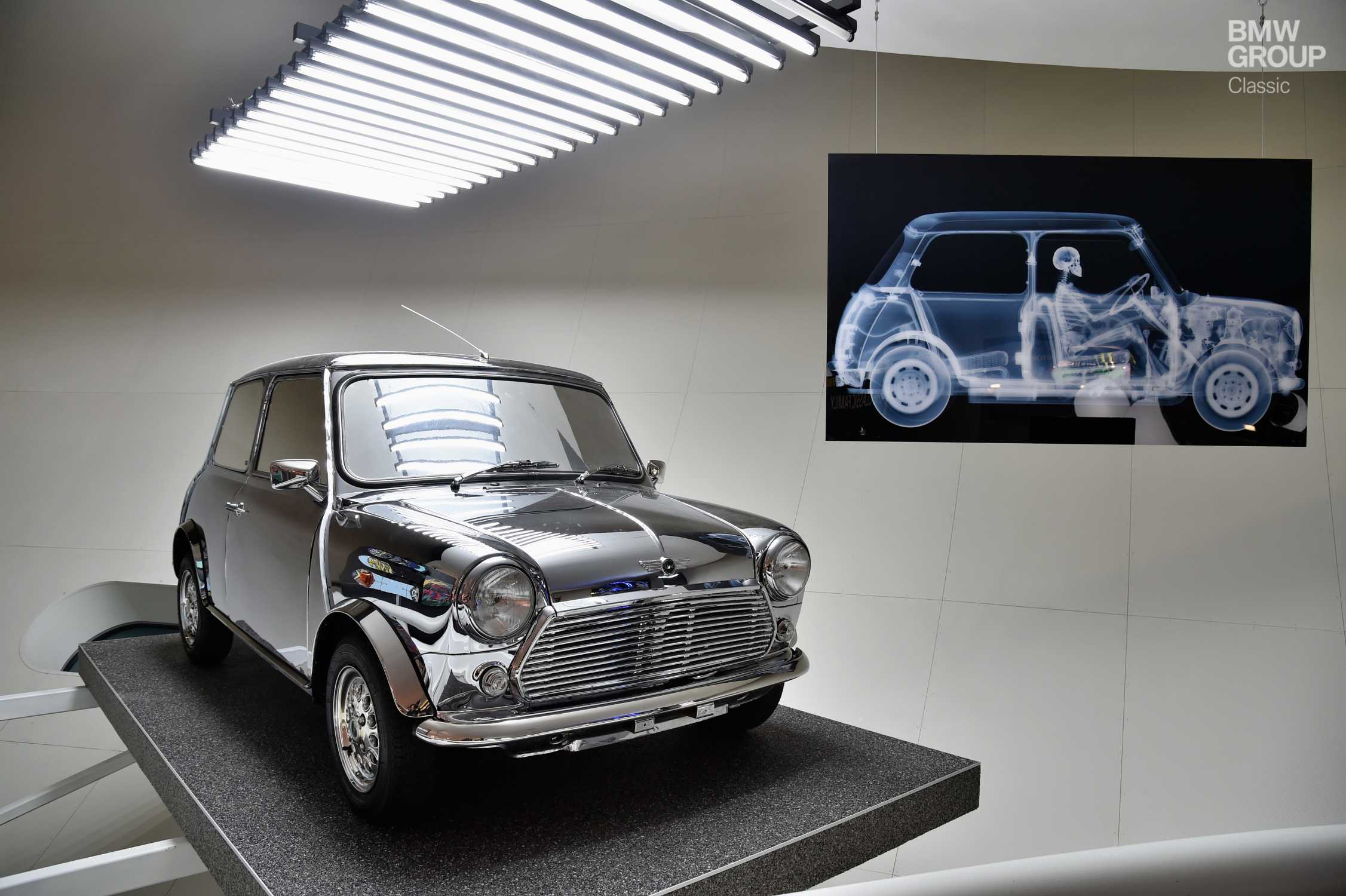Ziggy Stardust, alias David Bowie, is no more. The charismatic pop star passed away in New York in January 2016, at the age of just 69. As well as his wondrous music and stage shows, the multi-talented star also created a classic Mini, entirely to his own design. He covered the whole of the sporty little number in gleaming chrome mirror plating, even the windows, so that the world could admire its reflection. The car looks like a precious gem on wheels. You just want to pick it up and pop it into a treasure chest full of jewellery and gold coins.
In 1999 the Mini celebrated its 40th birthday. It now belonged to an elite band of cars that have been built over a seriously long period of time. Indeed, production will probably never cease per se (life without it would be simply unthinkable), it may just take the odd time-out. In 2001 the classic Mini gained a worthy successor – in the shape of the new MINI – and an honourable place as a landmark in automotive construction.
David Bowie was more than an artist of incredibly versatile talent, he was also widely regarded as a thoroughly polite and friendly man – and, as such, very much the exception in show business. When you read his interviews, what immediately comes across is his quick-wittedness and the subtle sense of humour underlining his words. In autumn 1998 a number of artists from the worlds of fashion and music, including Paul Smith and Kate Moss, were invited to create a “designer Mini” to feature among the highlights of the car’s birthday celebrations the following year. Neither Smith nor Moss strayed far from the original car, opting for coloured stripes and a spider’s web set against a dark paint finish respectively. But the Bowie-style classic Mini was something else, like a highly-polished silver bar reflecting everything around it and with not a single window you could see through from the outside. Only the rear lights and tyres remained untouched, as the car had to be driveable – in theory at least.
David Bowie’s aim with the mirror plating was, first and foremost, a classic Mini that “could not be distinguished from its surroundings”; because everything is reflected in it, the car is an integral element of wherever it happens to be. It does not have its own colour or pattern. But this is a clever and highly sophisticated idea for a car which habitually moves through constantly changing spaces, day and night, winter and summer. Bowie himself described it as the Emperor’s new clothes, in reference to the fairy tale in which the Emperor is naked, but believes himself to be dressed in a fine set of new robes. He liked the fact that anybody who saw the car would also be looking at his or her own face, thereby becoming part of the Mini.
What did the classic Mini mean to David Bowie? The artist gave a one-word answer: parking. And when asked why he thought the Mini design had lasted so long, the answer was the same: parking. This has long been an issue for city-dwellers – and a perennial challenge in London, in particular. For Bowie, it was quite clear: the Mini was built for the city.
When asked about other iconic examples of British design, it was not, though, another car that sprung to Bowie’s mind. He simply said: “The sandwich”.
